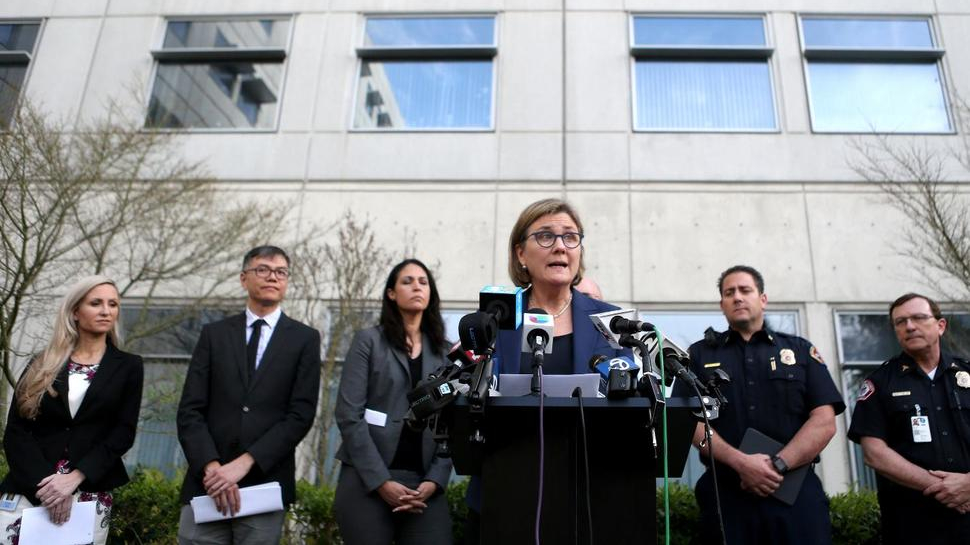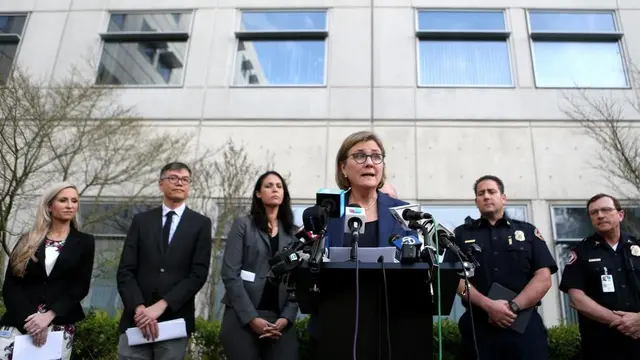
Santa Clara County Public Health Department Director Dr. Sara Cody speaks during a news conference in San Jose, California, U.S., February 28, 2020. /AP
Fifty-seven-year-old Patricia Dowd died at her home in San Jose, California on February 6.A heart attack was believed to be the cause. But as Dowd was only mildly obese, medical examiners still had questions.
"She has a perfectly normal sized heart at 190 grams. It doesn't have any abnormalities of the coronary arteries and there's no cholesterol in her blood vessel meaning that you wouldn't expect a heart like that to rupture," forensic pathologist Judy Melinek who had read the autopsy report told CGTN.
"In this case what's happened – myocarditis is the name of the infection – has damaged the heart muscle and during the process of remodeling, the heart weakened and burst open."
Fortunately, examiners had the foresight to save Dowd's tissue and send it to the CDC. But due to testing shortages, it would not be for nearly two months before the CDC would finish the diagnosis: Dowd died of COVID-19.
The signed-off autopsy indicates SARS-CoV-s was found in her heart, trachea, lungs and intestines.
"The virus has entered the bloodstream and circulated and damaged the heart muscle directly so the damage has occurred to the heart muscle cells and the body's immune system is trying to clean them up," said Melinek.
"In the process they weaken the muscle, so with every pump you're putting pressure on a weakened state and it can then fail or tear open. Blood comes out of the sac around the heart and that is fatal."
That means Dowd death is the earliest recorded COVID-19 fatality in the United States so far. Previously, the earliest fatalities were believed to be a man and a woman who both died on February 26close to Seattle.
The city of San Jose, where Dowd died, is in Santa Clara County, the heart of Silicon Valley. So far, Santa Clara County, with a population of around 1.9 million people, has more than 2,225 cases and 121 deaths, making it one of the hardest hit counties in California.
"The disease has been around in this area, much longer than previously thought," said H. Westley Clark, the dean's executive professor of public health at Santa Clara University. "Some speculate January. (It) could have been earlier than late January. It's not known. You are dealing with uncertainties here especially since unfortunately, testing was not readily available in the United States. In fact, toward the end of February we hadn't done very many tests in the United States, less than 500 out of a population of 320 million."
The Santa Clara County Medical Examiner's office is reportedly continuing to re-examine old cases and send what deemed necessary tissues for testing to the CDC.
"Part of the objective early on is to identify people who have been exposed and then we can encourage those people to get tested," said Clark. "And now that we have the antibody test which is a recent development, we can say this person went to xyz park and anybody who has gone to that park during that time might want to go get tested with the antibody to see whether they have some kind of antibody response or immunological response or to see whether they are an asymptotic carrier."
Melinek said it's important to know the specific findings and reclassifications from the autopsies so that pathologists can recognize "insidious infection" in their own populations.
"It's important to ascertain when the virus first entered in order for us to have an understanding of how to get control of it," said Melinek. "You have to look back retrospectively at what happened in order to be able to prevent it from continuing to spread in other places."
 简体中文
简体中文

